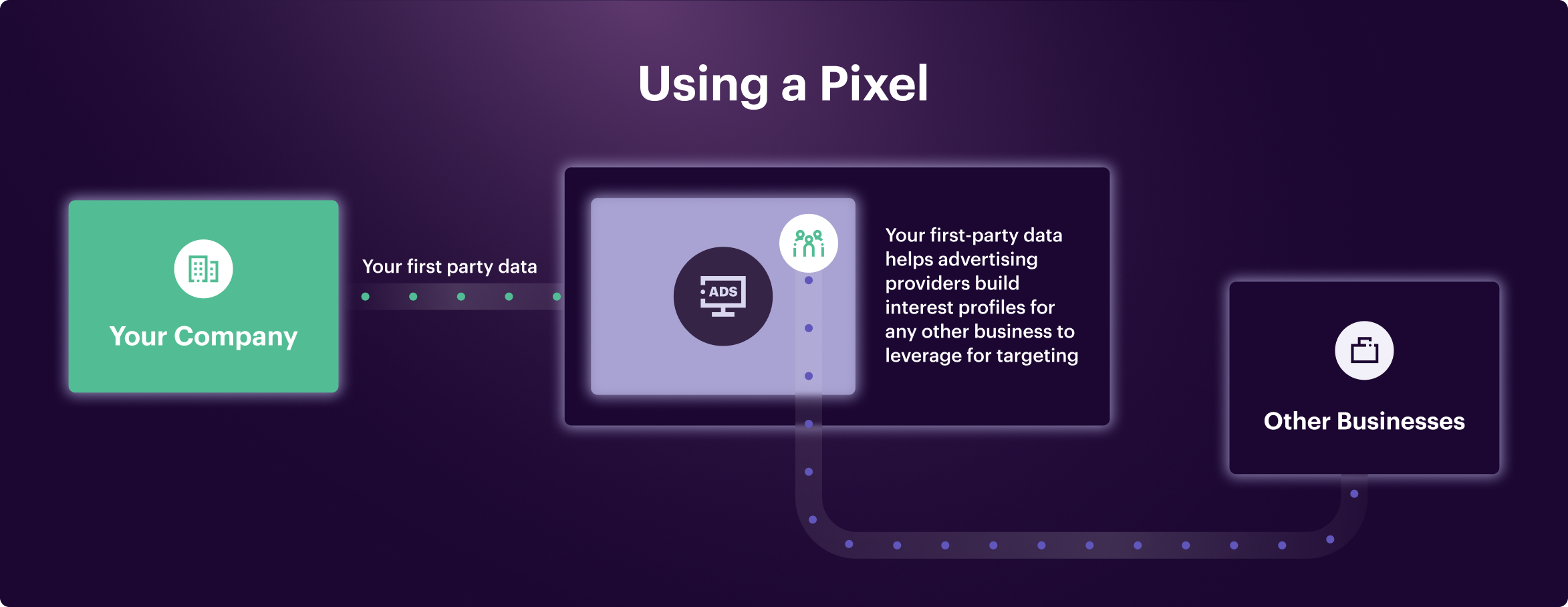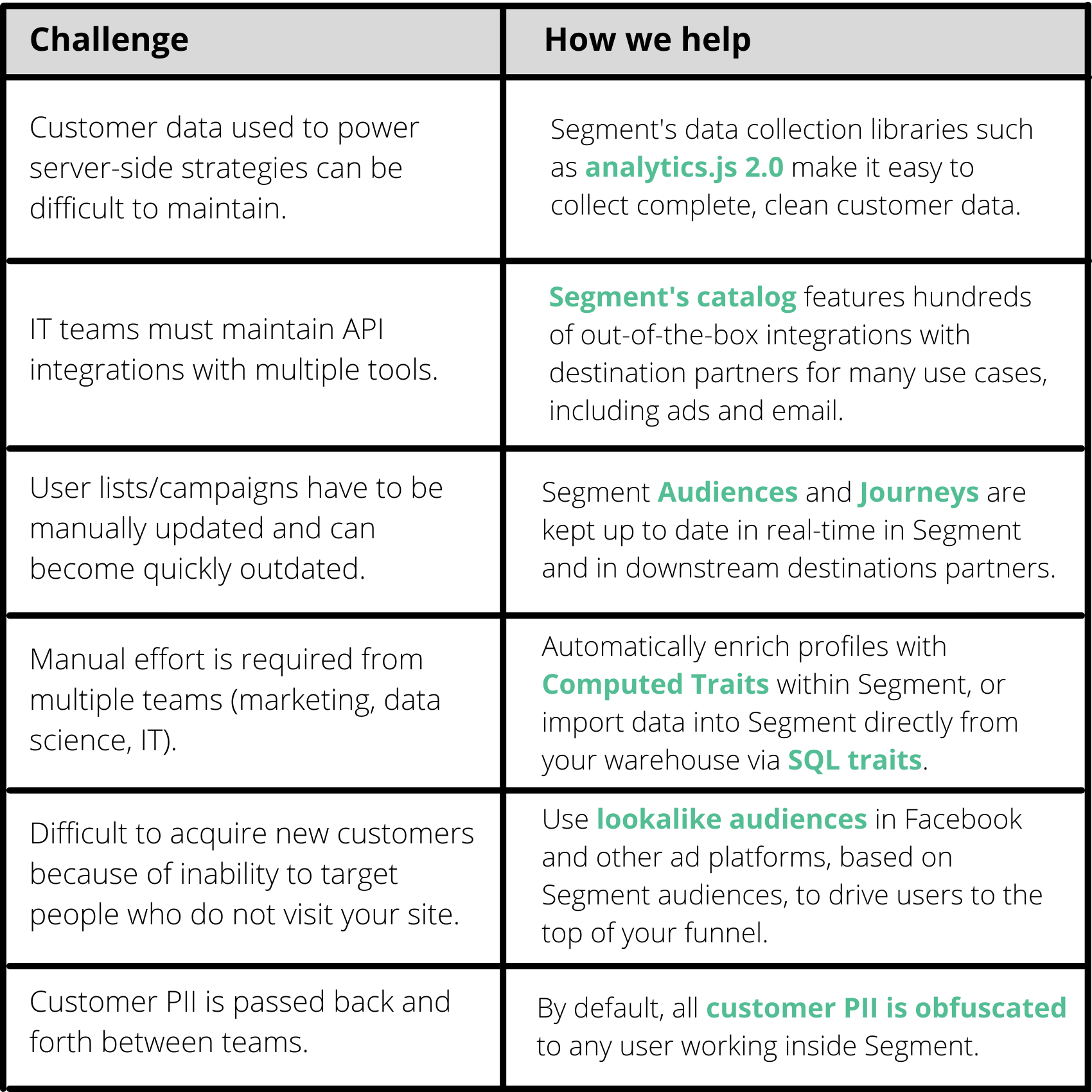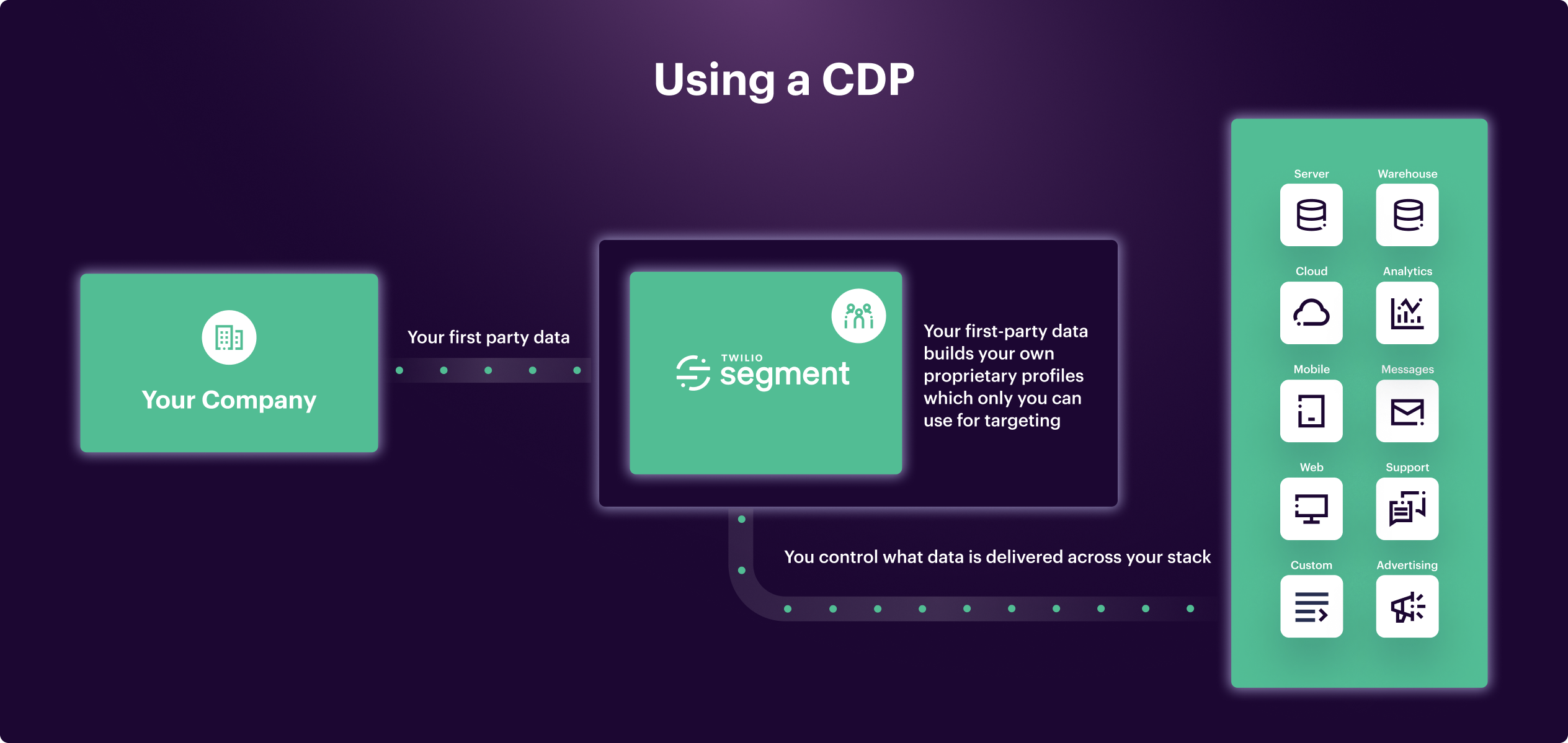Rethinking advertising pixels: Unlocking the full potential of your customer data with server-side activation
A look at server-side activation as the new alternative to the third-party advertising pixel.
A look at server-side activation as the new alternative to the third-party advertising pixel.
There’s no doubt that paid media channels like Facebook and Google represent some of the most effective marketing channels. This is due to the sheer number of users who use these platforms, as well as the ability for these platforms to understand their users at an extraordinarily deep level.
What is less understood is the best way for marketers to actually run campaigns with these providers. This post explores two strategies for running campaigns on paid media — 1) using ad pixels and 2) using a customer data platform (CDP) + a server-side integration — and some of the pros and cons of each.
The fastest and easiest way to run an advertising campaign is with advertising pixels. Pixels can feel like magic — place them on your website and marketers can quickly roll out relatively effective campaigns with little effort. Among the most popular are re-marketing and cart abandonment campaigns, which show people an ad after they view a product (or add it to their cart) on an e-commerce website. But how do they work?
Ad pixels work by enabling paid media advertising platforms, like Google, Facebook, Snapchat, Pinterest, and others, to understand what people are doing outside of their own platforms. Because users are logged in to sites like Facebook or Google while their ad pixels are present on an external website, Facebook and Google can collect information about what users are doing on that website.
This data is granular — meaning that Facebook or Google understand which specific products people are looking at, which items they have added to their cart, and which items they’ve actually purchased. These campaigns work because the ad pixel instantaneously tells the advertising platform that a user has viewed a specific product, and rules can easily be set up to show that user a specific ad based on the product they viewed.
In practice, this works great. Marketers can “strike while the iron’s hot,” and stay top of mind to potential consumers who have signaled a high intent to buy. Additionally, pixels offer the major benefit of retargeting anonymous users. This means that by using a pixel, you can show ads to users who are logged into Facebook or Google after they visit your website, even if they’re not logged into your website itself. This is especially important for marketers who are looking to attract new users.
But by using a pixel, you are sending that granular customer data directly to the advertising platform and are losing out on an opportunity to add that data to your own first party customer profile. In short, Facebook and Google understand your customer behavior, but your business does not get this information.
In addition to using pixels to run re-marketing and cart abandonment campaigns, marketers can run campaigns through major advertising platforms that target people with specific interests. Interests can include companies, brands, sports teams, bands, and other categories. For example, a marketer can run a campaign geared towards users who like running, hiking, or golf.
Users’ interests are typically determined using an algorithm by the advertising platform, leveraging both signals received from the pixels, as well as the user’s activity on the platform itself (such as likes and shares on Facebook, or searches on Google). So by using an ad pixel, it means your customer data is contributing to how interests are assigned to the advertiser platform’s user profiles — which can be used by any marketer (i.e. your competitors) to run an ad campaign.
Ultimately, third-party advertising pixels from platforms like Facebook and Google help grow those platforms’ own robust user profiles, which benefit all businesses, including your competitors. Third-party advertising pixels do not help individual businesses own and build their own first-party customer profiles.

While third-party advertising pixels are easy to use, privacy-focused companies are phasing them out. This is due to growing privacy regulations, browser updates, and questions around how ad platforms are using pixel data internally. It’s time for marketers to identify future-proof solutions that respect consumer privacy — server-side integrations are one solution.
An alternative to using an ad pixel is telling the paid media channel exactly which users to show an ad. Historically, this was done by marketers uploading a .csv file of email addresses to Facebook or Google. This often meant a marketer must go to their data science team and ask them to pull a list of users who match X, Y, Z criteria.
More recently, paid media channels have released APIs, where marketers can programmatically send lists of users to show an ad. Using APIs to send lists of users to paid media advertisers is what we mean when we say server-side integration. But it’s not just paid media who have this server-side functionality. Email, SMS, and analytics tools also have very similar APIs.
Even though you send information from your known users via server-side, this strategy can still be used to attract users into the top of the funnel. Instead of retargeting anonymous users based on pixel tracking, you can target similar audiences via lookalike audiences. In this instance, marketers send a list of their best, highest-value customers to advertising platforms via server-side integration; from there, the advertising platform will show ads to similar users based on their own algorithm. Overall, this is a very effective way to attract new customers - check out how Stylepit and Veronica Beard do it.
Historically, the server-side strategy has been fraught with challenges due to manual and labor-intensive processes companies needed to put in place to execute server-side campaigns effectively. Essentially, businesses have had to historically build their own systems to run server-side campaigns.
Enter the Customer Data Platforms. At Segment, we have designed our CDP to automate server-side activation to not only ad platforms like Facebook and Google, but to the rest of your marketing stack as well. Savvy marketers are using Segment to:
Harness their first-party data to develop their own first-party customer profiles.
Activate known + anonymous customers server-side — using a common profile to run coordinated, automated, and omnichannel customer journeys across paid media, email, SMS analytics, and other channels.
Safeguard their customer data — granular customer data is not shared with any third parties.
Here's a look at how CDPs solve for the historical challenges of server-side activation:

Read more about Segment's capabilities: Analytics.js 2.0, Segment’s catalog, Audiences, Journeys, Computed Traits, SQL traits, Lookalike Audience Set-Up, Obfuscated PII

For examples on how to accomplish server-side customer activation in Segment, check out the following recipes:
To conclude, any experienced marketer will tell you that a well-formed first-party customer profile is foundational for a businesses marketing strategy. But having a great first-party customer profile is only half the battle.
Being able to leverage that profile to effectively activate, convert, retain, and grow users is the holy grail. Furthermore, activating, converting, retaining, and growing users is not only done using paid media — it’s done with analytics, email, SMS, and building delightful products. It’s incredibly important that amazing first-party customer profiles are accessible not only to paid media, but to other equally important channels. Using a CDP plus a server-side activation strategy gives you the best of both worlds. To learn more, request a demo with Segment today.

Our annual look at how attitudes, preferences, and experiences with personalization have evolved over the past year.